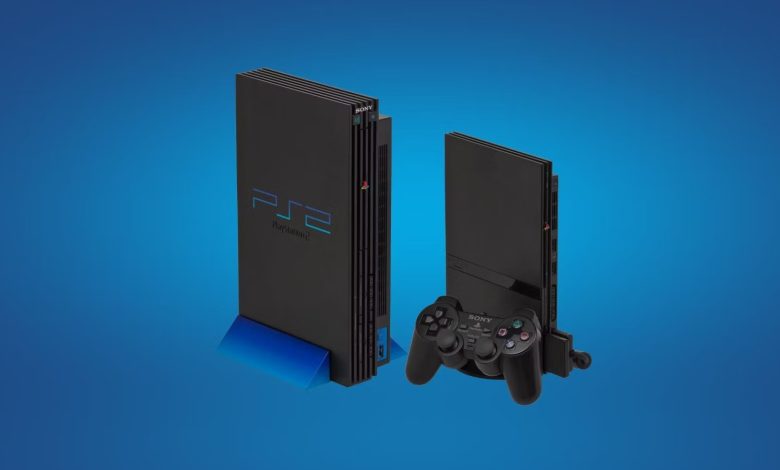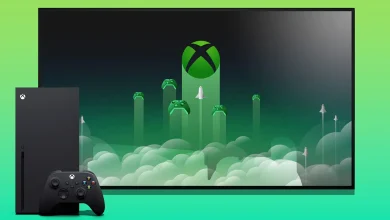PlayStation 2: Revolutionizing Gaming and Shaping an Era
PlayStation 2: Revolutionizing Gaming and Shaping an Era

Introduction:
Released in the year 2000, the PlayStation 2 (PS2) stands as a monumental landmark in the history of gaming. Boasting an unparalleled library of games, innovative features, and groundbreaking technology, the PS2 not only solidified Sony’s dominance in the gaming industry but also left an indelible mark on the hearts and minds of gamers worldwide. This article explores the impact and legacy of the PlayStation 2, detailing its contributions to gaming culture and its lasting influence on the industry.
Setting the Stage:
The PlayStation 2 arrived on the scene at a time of rapid technological advancement and growing mainstream acceptance of video games as a form of entertainment. Building upon the success of its predecessor, the original PlayStation, Sony sought to push the boundaries of gaming with the PS2. Featuring a sleek design, powerful hardware, and an expansive library of games, the PS2 quickly captured the imagination of gamers and critics alike.
Setting the Stage: The Foundation of Gaming’s Evolution
Introduction:
In the vast tapestry of gaming’s evolution, the concept of “setting the stage” serves as a pivotal chapter. It encapsulates the foundational elements, innovations, and cultural shifts that have laid the groundwork for the diverse and dynamic landscape of gaming we know today. From the early days of pixelated screens to the immersive virtual worlds of modern gaming, this article delves into the importance of setting the stage in shaping the trajectory of gaming’s evolution.
The Dawn of Electronic Entertainment:
The journey of setting the stage in gaming begins with the emergence of electronic entertainment in the mid-20th century. With the invention of cathode-ray tubes (CRTs) and transistors, pioneers like William Higinbotham and Ralph Baer paved the way for the creation of early electronic games. These rudimentary inventions, such as “Tennis for Two” and “Spacewar!,” laid the foundation for the burgeoning video game industry, igniting the spark of imagination that would fuel decades of innovation.
Arcade Culture and Home Consoles:
The 1970s and 1980s witnessed the rise of arcade culture, marked by the proliferation of iconic titles such as “Pong,” “Space Invaders,” and “Donkey Kong.” These coin-operated machines served as social hubs where players could test their skills, compete for high scores, and immerse themselves in virtual worlds. Concurrently, the introduction of home consoles like the Atari 2600 and Intellivision brought the arcade experience into the living room, democratizing access to gaming and laying the groundwork for the console wars to come.
Technological Advancements and Hardware Innovations:
Setting the stage in gaming is also characterized by rapid technological advancements and hardware innovations. The advent of microprocessors, graphics processing units (GPUs), and digital storage mediums propelled gaming into a new era of visual fidelity and immersive gameplay experiences. Consoles like the Nintendo Entertainment System (NES), Sega Genesis, and Super Nintendo Entertainment System (SNES) showcased the power of 8-bit and 16-bit technology, while pioneering franchises such as “Super Mario Bros.,” “The Legend of Zelda,” and “Sonic the Hedgehog” captured the hearts and imaginations of players worldwide.
The Rise of Personal Computers and Online Gaming:
The 1990s heralded the rise of personal computers (PCs) as viable gaming platforms, offering players unprecedented levels of customization, flexibility, and performance. The introduction of CD-ROMs, multimedia capabilities, and online connectivity transformed PCs into multimedia powerhouses, paving the way for immersive gaming experiences such as “Doom,” “Warcraft,” and “Quake.” Moreover, the emergence of online gaming platforms and multiplayer networks like MUDs (Multi-User Dungeons) and MMORPGs (Massively Multiplayer Online Role-Playing Games) fostered a sense of community and social interaction that transcended geographical boundaries.
The Evolution of Consoles and Handheld Devices:
Setting the stage in gaming also encompasses the evolution of consoles and handheld devices, each iteration pushing the boundaries of technology and design. Consoles like the PlayStation, Xbox, and Nintendo Switch introduced innovative features such as motion controls, touchscreens, and virtual reality (VR) capabilities, while handheld devices like the Game Boy, PSP, and Nintendo DS revolutionized portable gaming. These platforms not only expanded the reach of gaming to new audiences but also paved the way for innovative gameplay experiences that blur the lines between traditional gaming and interactive entertainment.
Cultural Impact and Societal Reflection:
Beyond the realm of technology and innovation, setting the stage in gaming also reflects broader cultural shifts and societal reflections. Gaming has evolved from a niche hobby to a mainstream form of entertainment, influencing popular culture, art, music, and fashion. Iconic characters such as Mario, Lara Croft, and Master Chief have become cultural icons, transcending the boundaries of gaming to become symbols of creativity, imagination, and inspiration.
Conclusion:
In conclusion, setting the stage in gaming serves as a foundational chapter in the rich tapestry of gaming’s evolution. It encompasses the early pioneers, technological advancements, hardware innovations, and cultural shifts that have shaped the trajectory of gaming from its humble beginnings to its current prominence in popular culture. As we reflect on the journey of setting the stage in gaming, we are reminded of the transformative power of imagination, creativity, and innovation that continues to drive the industry forward into the future.
Technical Specifications and Innovation:
At its core, the PlayStation 2 was a marvel of engineering, boasting impressive technical specifications for its time. Powered by a custom-designed Emotion Engine CPU and Graphics Synthesizer GPU, the PS2 delivered stunning visuals and immersive gameplay experiences. Its ability to render detailed 3D graphics, support for DVD playback, and backward compatibility with PlayStation games set it apart from its competitors and solidified its status as a multimedia powerhouse. One of the most notable innovations of the PS2 was its DualShock 2 controller, which featured improved analog sensitivity, pressure-sensitive buttons, and built-in vibration feedback. This controller became synonymous with the PlayStation brand and remains one of the most iconic and beloved controllers in gaming history
Technical Specifications and Innovation in Gaming: Pushing the Boundaries of Entertainment
Introduction:
In the ever-evolving world of gaming, technical specifications and innovation play a crucial role in shaping the experiences that captivate players worldwide. From powerful processors to cutting-edge graphics cards, the relentless pursuit of technological advancement has pushed the boundaries of what is possible in interactive entertainment. This article explores the pivotal role of technical specifications and innovation in gaming, highlighting the key components, breakthroughs, and advancements that have propelled the industry forward.
The Foundation of Gaming Hardware:
At the heart of every gaming device lies a complex array of hardware components meticulously engineered to deliver immersive experiences. Central processing units (CPUs), graphics processing units (GPUs), random access memory (RAM), and storage mediums form the backbone of gaming hardware, enabling developers to create richly detailed worlds, lifelike characters, and fluid gameplay mechanics.
Innovations in CPU and GPU Technology:
The evolution of gaming hardware is closely intertwined with advancements in CPU and GPU technology. From the early days of 8-bit and 16-bit processors to the multi-core, hyper-threaded CPUs of today, gaming hardware has undergone a dramatic transformation in terms of processing power and efficiency. Similarly, the development of dedicated GPUs with thousands of shader cores and teraflops of computational power has revolutionized the way games are rendered, allowing for realistic lighting, shadows, and textures that rival those found in Hollywood blockbusters.
Memory and Storage Solutions:
In addition to processing power, memory and storage solutions play a critical role in gaming hardware. High-speed RAM modules ensure smooth performance and reduce loading times, while solid-state drives (SSDs) provide fast access to game data and assets. The advent of technologies such as NVMe (Non-Volatile Memory Express) has further accelerated storage speeds, enabling near-instantaneous loading times and seamless transitions between game environments.
Display Technologies and Resolution:
Technical specifications in gaming extend beyond just hardware components to include display technologies and resolution. High-definition displays, ultra-wide monitors, and high-refresh-rate panels have become standard fare for gaming enthusiasts, offering crisp visuals and smooth motion for a more immersive experience. Moreover, advancements in display technologies such as OLED, HDR (High Dynamic Range), and variable refresh rate (VRR) further enhance image quality and realism, bringing games to life in ways previously unimaginable.
Innovative Input Devices and Controllers:
Beyond the realm of hardware specifications, innovation in gaming extends to input devices and controllers. From the iconic simplicity of the joystick and button layout to the precision and responsiveness of modern gamepads, controllers have evolved to accommodate the diverse needs and preferences of players. Innovations such as haptic feedback, adaptive triggers, and motion-sensing capabilities add a new dimension to gameplay, allowing for greater immersion and tactile feedback.
Virtual Reality and Augmented Reality:
One of the most exciting frontiers in gaming innovation is the realm of virtual reality (VR) and augmented reality (AR). VR headsets like the Oculus Rift, HTC Vive, and PlayStation VR transport players to immersive virtual worlds where they can interact with environments and objects in three-dimensional space. AR devices like the Microsoft HoloLens and Pokémon GO overlay digital content onto the real world, blurring the lines between physical and virtual reality.
Cloud Gaming and Streaming Services:
Another area of innovation in gaming is the emergence of cloud gaming and streaming services, which leverage the power of remote servers to deliver high-quality gaming experiences to any device with an internet connection. Services such as Google Stadia, NVIDIA GeForce Now, and Xbox Cloud Gaming allow players to access a library of games without the need for expensive hardware, opening up new possibilities for accessibility and convenience.
Conclusion:
In conclusion, technical specifications and innovation are the driving forces behind the evolution of gaming, pushing the boundaries of what is possible and redefining the way we play and experience interactive entertainment. From powerful processors and graphics cards to innovative input devices and display technologies, gaming hardware continues to evolve at a rapid pace, ushering in a new era of immersive experiences and limitless possibilities. As we look towards the future, one thing is certain: the relentless pursuit of technical innovation will continue to shape the landscape of gaming for generations to come.
.
Expanding the Gaming Landscape:
Perhaps the most significant contribution of the PlayStation 2 was its expansive library of games, which encompassed a wide range of genres and experiences. From action-adventure epics like “Grand Theft Auto: San Andreas” and “Shadow of the Colossus” to immersive role-playing games like “Final Fantasy X” and “Kingdom Hearts,” the PS2 offered something for everyone. The PS2 also played host to a number of groundbreaking franchises that would go on to define gaming for years to come. Titles such as “Metal Gear Solid 2: Sons of Liberty,” “Ratchet & Clank,” and “God of War” pushed the boundaries of storytelling, gameplay, and graphical fidelity, setting new standards for the medium.
Expanding the Gaming Landscape: A Journey of Diversification and Innovation
Introduction:
The gaming landscape has evolved dramatically over the years, expanding far beyond its traditional boundaries to encompass a diverse array of platforms, genres, and experiences. From classic arcade cabinets to mobile devices, virtual reality (VR) headsets, and cloud gaming services, the opportunities for gaming have never been more abundant. This article explores the multifaceted expansion of the gaming landscape, highlighting the diverse platforms, emerging genres, and technological innovations that have transformed the way we play and experience games.
Diversification of Platforms:
The expansion of the gaming landscape is perhaps most evident in the proliferation of gaming platforms, each catering to different audiences and play styles. Consoles like the PlayStation, Xbox, and Nintendo Switch offer immersive gaming experiences in the comfort of the living room, while PCs provide unparalleled customization and performance for enthusiasts.
Moreover, the rise of mobile gaming has democratized access to gaming, allowing players to enjoy casual and immersive experiences on smartphones and tablets. The advent of cloud gaming services like Google Stadia, NVIDIA GeForce Now, and Xbox Cloud Gaming has further expanded the reach of gaming, enabling players to stream high-quality games to any device with an internet connection.
Emerging Genres and Experiences:
As the gaming landscape has expanded, so too have the genres and experiences available to players. While traditional genres like action, adventure, and role-playing games remain popular, new genres and subgenres have emerged to cater to diverse tastes and preferences.Simulation games like “The Sims” and “Cities: Skylines” allow players to build and manage virtual worlds, while survival games like “Minecraft” and “Rust” challenge players to survive and thrive in harsh environments. Indie games, with their focus on creativity, innovation, and storytelling, have also gained prominence, offering unique and memorable experiences that defy traditional conventions. Moreover, the rise of virtual reality (VR) and augmented reality (AR) has opened up new frontiers in gaming, immersing players in interactive virtual worlds and blending digital content with the real world. VR experiences like “Beat Saber” and “Half-Life: Alyx” offer unparalleled immersion and interactivity, while AR games like “Pokémon GO” and “Minecraft Earth” encourage exploration and social interaction in the real world.
Technological Innovations and Accessibility:
Technological innovations have played a crucial role in expanding the gaming landscape, making games more accessible and immersive than ever before. Advancements in graphics technology, artificial intelligence, and physics simulations have enabled developers to create stunningly realistic worlds and lifelike characters that blur the lines between reality and fiction.
Moreover, innovations in input devices and controllers, such as motion-sensing controllers, haptic feedback, and adaptive triggers, have enhanced immersion and interactivity, allowing players to engage with games in new and exciting ways. Accessibility features, including customizable controls, text-to-speech options, and colorblind modes, have also made gaming more inclusive and accessible to players with disabilities.
Social and Community Engagement:
The expansion of the gaming landscape has fostered new forms of social interaction and community engagement, bringing players together from around the world to connect, collaborate, and compete. Online multiplayer games, social gaming platforms, and streaming services have created virtual spaces where players can form friendships, join clans, and participate in global events and tournaments. Furthermore, gaming communities and content creators have flourished on platforms like Twitch, YouTube, and Discord, providing platforms for players to share their experiences, create content, and build communities around their favorite games. Esports, with its competitive tournaments and professional leagues, has also emerged as a major force in the gaming landscape, attracting millions of viewers and generating significant revenue.
Conclusion:
In conclusion, the expansion of the gaming landscape has transformed gaming into a diverse and dynamic form of entertainment that transcends traditional boundaries and appeals to players of all ages and backgrounds. From classic consoles to mobile devices, virtual reality (VR) headsets, and cloud gaming services, the opportunities for gaming have never been more abundant. As we look towards the future, one thing is certain: the gaming landscape will continue to evolve and innovate, providing new and exciting experiences for players around the world.
Cultural Impact and Legacy:
Beyond its technical achievements and impressive library of games, the PlayStation 2 had a profound cultural impact that resonated far beyond the gaming community. It became a staple of living rooms around the world, serving as a gateway to digital entertainment for millions of people. Its ability to double as a DVD player helped popularize the format and played a significant role in the adoption of DVD technology. Moreover, the PlayStation 2 fostered a sense of nostalgia and camaraderie among gamers, serving as a focal point for social gatherings and shared experiences. Whether competing in multiplayer matches, trading games with friends, or embarking on epic adventures together, the PS2 brought people together in ways that transcended its status as a gaming console.
Cultural Impact and Legacy: The Enduring Influence of Gaming on Society
Introduction:
Gaming has transcended its origins as a niche hobby to become a global phenomenon that permeates every aspect of modern society. Beyond mere entertainment, gaming has left an indelible mark on culture, shaping the way we interact, communicate, and perceive the world around us. This article explores the profound cultural impact and enduring legacy of gaming, examining its influence on art, music, fashion, technology, and social dynamics.
The Rise of Gaming Culture:
The cultural impact of gaming can be traced back to the early days of arcades and home consoles, where players gathered to compete, socialize, and share their love for gaming. Arcade culture, with its vibrant neon lights and cacophony of sounds, became a symbol of youthful rebellion and camaraderie, fostering a sense of community among players from diverse backgrounds. As gaming technology evolved and consoles became more accessible, gaming culture expanded beyond arcades to encompass living rooms, bedrooms, and dormitories around the world. Gaming magazines, fanzines, and conventions emerged, providing platforms for enthusiasts to exchange tips, discuss strategies, and celebrate their favorite titles.
Artistic Expression and Storytelling:
Gaming’s cultural impact extends to the realm of artistic expression and storytelling, with games evolving into immersive narratives that rival those found in literature and film. From the epic quests of “The Legend of Zelda” and “Final Fantasy” to the emotional journeys of “The Last of Us” and “Journey,” games have become a canvas for exploring complex themes, characters, and worlds. Moreover, gaming has inspired a new generation of artists, writers, and designers to create works that celebrate gaming culture and pay homage to its iconic characters and moments. Fan art, cosplay, and online communities serve as creative outlets for expressing passion and appreciation for gaming’s rich tapestry of stories and characters.
Music and Sound Design:
Gaming’s cultural impact is also evident in its influence on music and sound design. From catchy chiptune melodies to orchestral scores, game soundtracks have become an integral part of the gaming experience, setting the tone and atmosphere for immersive gameplay. Iconic themes like the “Super Mario Bros.” overworld theme and the “Halo” main theme have become instantly recognizable, transcending the boundaries of gaming to become cultural touchstones. Furthermore, gaming has inspired musicians and composers to explore new avenues of creativity, blending electronic, orchestral, and ambient elements to craft unique soundscapes that evoke emotion and enhance immersion. Concerts, albums, and live performances dedicated to game music have become popular attractions, attracting audiences of all ages and backgrounds.
Fashion and Merchandising:
Gaming’s cultural impact extends to the world of fashion and merchandising, with iconic characters and symbols from popular games adorning clothing, accessories, and collectibles. From pixelated retro designs to sleek, minimalist apparel, gaming-inspired fashion has become a staple of streetwear culture, appealing to gamers and non-gamers alike. Moreover, gaming merchandising has become a lucrative industry in its own right, with licensed products ranging from action figures and plush toys to board games and trading cards. Brands and retailers have capitalized on gaming’s popularity, creating collaborations and limited-edition collections that cater to fans’ insatiable appetite for all things gaming-related.
Technological Innovation and Social Dynamics:
Gaming’s cultural impact is perhaps most evident in its influence on technological innovation and social dynamics. Games have served as catalysts for advancements in graphics, artificial intelligence, virtual reality, and networking technology, pushing the boundaries of what is possible and driving progress in other industries. Furthermore, gaming has fostered new forms of social interaction and communication, breaking down barriers of geography, language, and culture. Online multiplayer games, social gaming platforms, and streaming services have created virtual spaces where players can connect, collaborate, and compete in real-time, forming friendships and communities that transcend traditional boundaries.
Conclusion:
In conclusion, the cultural impact and legacy of gaming are profound and far-reaching, touching every aspect of modern society. From its humble beginnings in arcades and living rooms to its pervasive influence on art, music, fashion, and technology, gaming has become a driving force in shaping the way we live, work, and play. As we look towards the future, one thing is certain: the cultural impact of gaming will continue to evolve and inspire new generations of creators, innovators, and enthusiasts for years to come the PlayStation 2 stands as a testament to the enduring legacy of gaming and the transformative power of technology. Its innovative features, expansive library of games, and cultural impact have solidified its place in gaming history as one of the greatest consoles of all time. As we look back on the legacy of the PlayStation 2, we are reminded of the countless memories, friendships, and experiences it has brought to generations of gamers, and its influence continues to shape the industry to this day.











